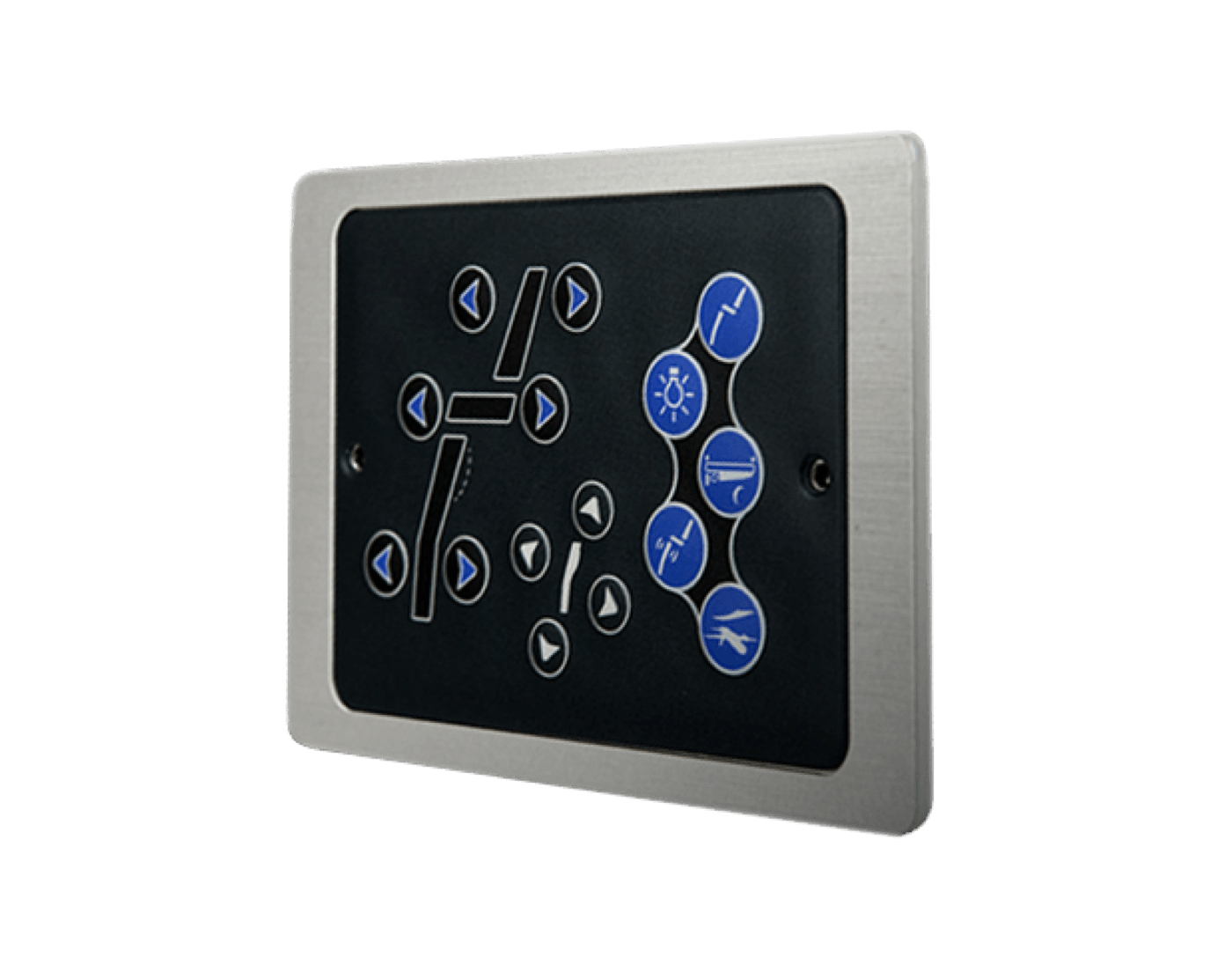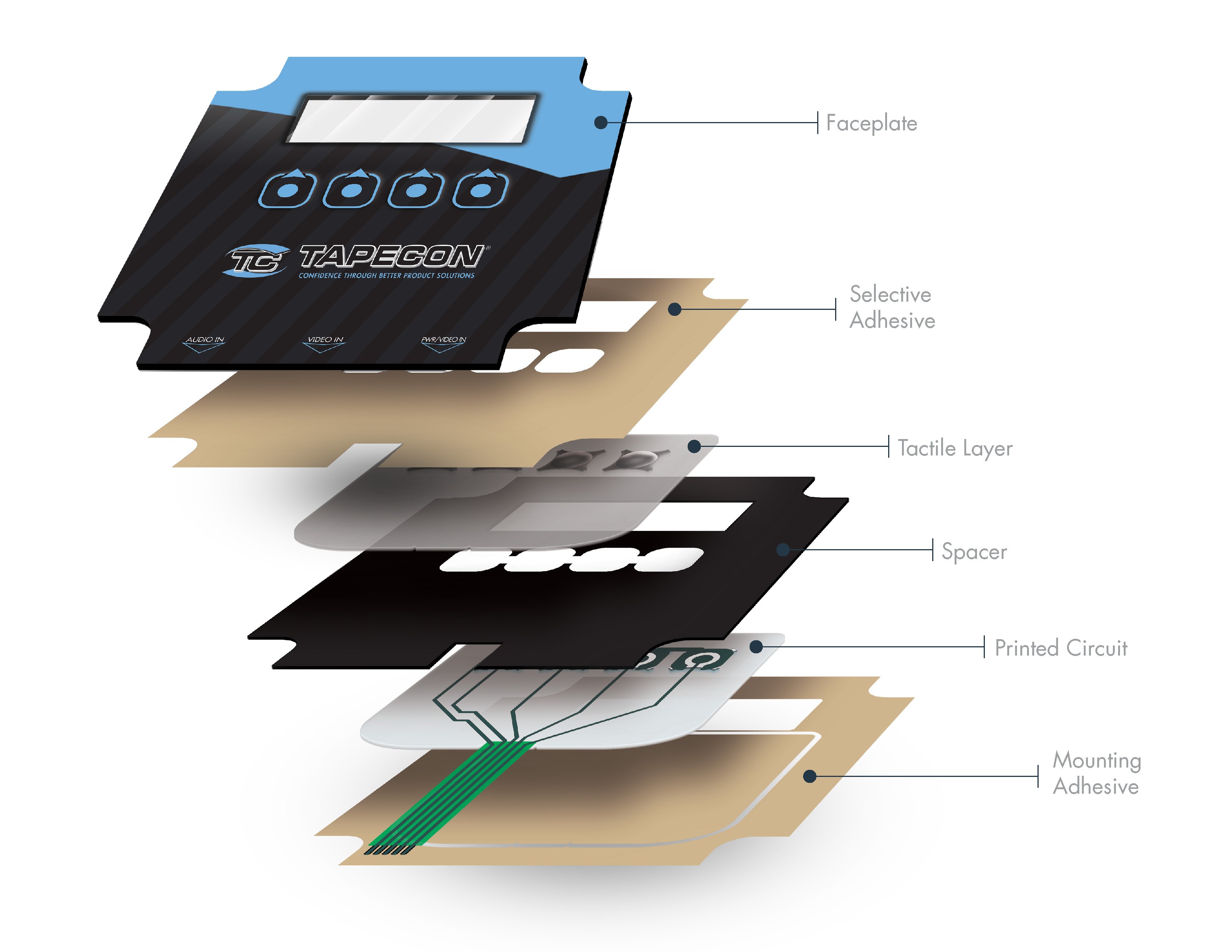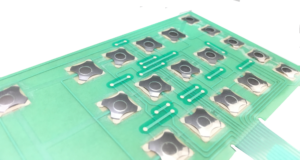Why Membrane Layer Switches Over Are Essential for Resilient Control Solution
Membrane switches play a pivotal duty in making certain the longevity and reliability of control systems across various sectors. As we explore the complex advantages of membrane switches, it becomes obvious that their relevance goes beyond simple performance, affecting individual experience and functional performance.
Summary of Membrane Layer Buttons
Membrane layer switches are versatile and dependable parts frequently made use of in various electronic control systems. These buttons consist of numerous layers, consisting of a visuals overlay, a spacer layer, and a published circuit layer. The graphic overlay offers both functional and visual style, while the spacer layer makes sure that the switches are triggered just when pushed. The printed circuit layer has conductive traces that finish an electrical circuit when the membrane layer is pressed, allowing the gadget to respond to individual inputs.
Membrane layer switches are commonly preferred in applications requiring a small and light-weight design, making them optimal for portable tools, medical devices, and commercial equipment. They can be customized to meet certain customer requirements and can incorporate different attributes such as backlighting, responsive feedback, and multiple colors. Moreover, membrane layer buttons are immune to dust, moisture, and pollutants, making them appropriate for settings where durability is important.
Advantages of Resilience
In numerous applications, the sturdiness of membrane layer changes deals considerable benefits that improve their general performance and integrity. These buttons are designed to withstand harsh environments, making them suitable for usage in requiring problems such as high moisture, severe temperature levels, and direct exposure to chemicals. Their durable building assists to stop damage from physical impact, ensuring long-lasting functionality and reducing the need for constant substitutes.
In addition, membrane layer buttons are immune to deterioration, which is important in applications where frequent interaction takes place. This longevity equates to reduce maintenance prices, as companies take advantage of reduced downtime and less service interruptions. Furthermore, the encapsulated layout of membrane switches shields interior components from dirt and wetness ingress, more adding to their lifespan.
Another benefit is their capability to keep constant efficiency gradually. With a high tolerance for mechanical anxiety, these switches maintain their tactile responses and electrical stability, ensuring customer fulfillment. Inevitably, the longevity of membrane layer changes not just improves functional effectiveness yet also promotes confidence in their dependability, making them a recommended choice for control systems throughout numerous industries.
Applications in Numerous Industries
Durable control systems utilizing membrane layer switches discover considerable applications across a variety of sectors, each benefiting from the special features these switches use. In the clinical sector, membrane buttons are essential for devices such as individual displays and analysis equipment, where dependability and convenience of cleansing click here for info are paramount. Their resistance to wetness and pollutants guarantees they keep functionality in sterile atmospheres.
The vehicle sector leverages membrane layer switches for dashboard controls and infotainment systems, where they offer smooth, inconspicuous user interfaces that boost customer experience. These switches are also developed to endure extreme problems, consisting of direct exposure to severe temperatures and vibrations.
In industrial settings, membrane switches are frequently utilized in equipment control board, using responsive comments and toughness essential for high-usage applications. Their capacity to stand up to chemicals makes them ideal for making settings where spills and pollutants are click here to find out more regular.

Consumer electronic devices, such as cooking area home appliances and push-button controls, also utilize membrane layer buttons for their adaptability and cost-effectiveness. In general, the adaptability and durable nature of membrane layer switches over make them important throughout numerous sectors, guaranteeing efficient procedure and durability in control systems.
Design and Visual Charm
While functionality is paramount, the layout and aesthetic appeal of control systems outfitted with membrane layer switches play a crucial duty in individual involvement and general experience (membrane switch). The visual layout of these buttons can dramatically affect user understanding and interaction. A properly designed membrane switch improves the appearance of the tool, making it much more appealing to customers and fostering a link between the customer and the product
Membrane layer changes supply an excellent deal of adaptability in design, permitting producers to tailor graphics, colors, and appearances to line up with brand identification and product aesthetic appeals. Using dynamic shades and distinctive patterns can attract attention, while tactile responses can reinforce the individual's communication with the device. In addition, the ability to integrate LED indications and backlighting into the membrane button design supplies both functional and visual advantages, enhancing exposure and use in various atmospheres.

Enhancing Customer Experience

Additionally, membrane layer buttons can be personalized to integrate visual user interfaces, improving functionality by providing info in a clear and instinctive way (membrane switch). This modification can consist of symbols, labels, and color coding that guide users through complex functionalities with ease. Additionally, their versatility enables assimilation in numerous settings, making certain constant performance whether in industrial equipment or consumer electronic devices
The durability of membrane layer buttons likewise plays a vital function in user experience. By withstanding rough problems and prolonged use, these switches lower the probability of system failures, thus advertising dependability and individual confidence. Inevitably, the calculated use membrane switches over not only elevates capability however also dramatically improves user communication with control systems, making them a crucial element in modern layout.
Final Thought
